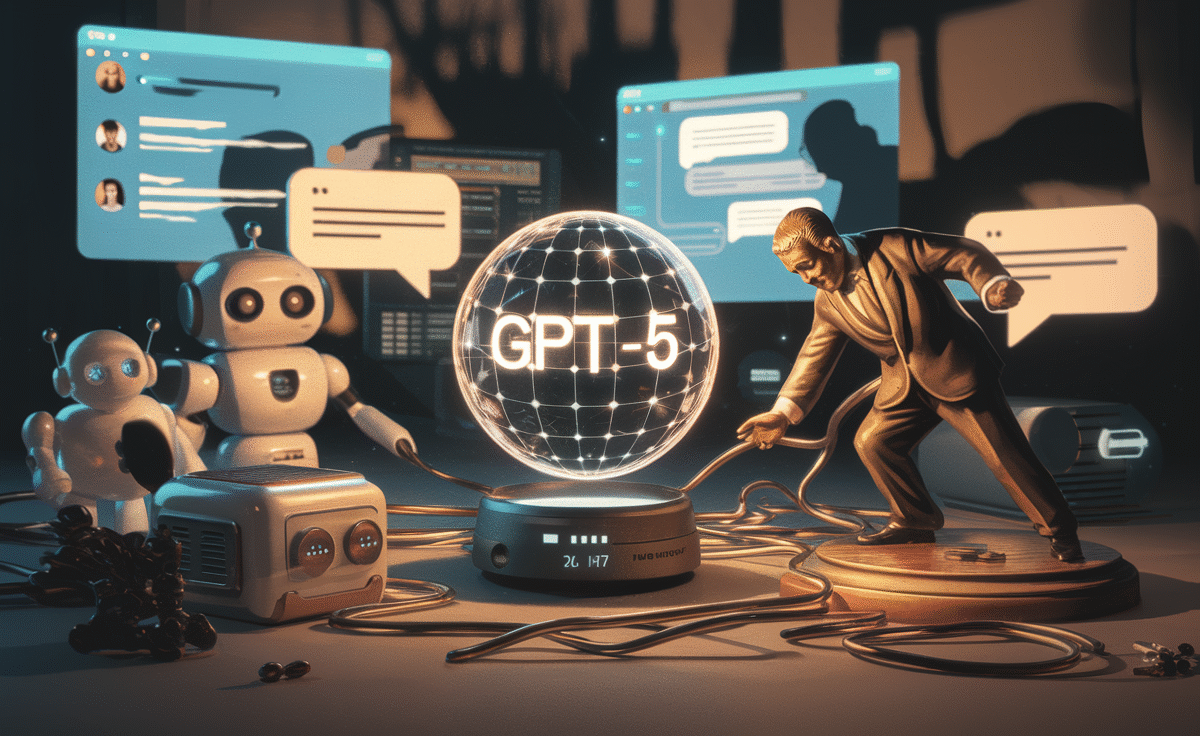Are you looking for smarter insights delivered directly to your inbox? Join our weekly newsletters for essential updates on enterprise AI, data, and security tailored for leaders in the field.
OpenAI’s GPT-5 Rollout Challenges
OpenAI co-founder and CEO Sam Altman has publicly acknowledged significant issues during the rollout of GPT-5, the company’s latest and most powerful large language model (LLM). In a Reddit AMA (Ask Me Anything) session and a post on X, Altman admitted to several problems that disrupted the launch, including faulty model switching, subpar performance, and user confusion. As a result, OpenAI has decided to partially reverse some platform changes and restore user access to earlier models like GPT-4o.
“It was a little more bumpy than we hoped for,” Altman commented on Reddit when discussing the GPT-5 launch. He also addressed the inaccurate model performance charts presented during OpenAI’s GPT-5 livestream, attributing the errors to “human error” stemming from late-night work and fatigue.
AI Scaling Limitations
Power limitations, increasing token costs, and inference delays are reshaping the landscape of enterprise AI. To navigate these challenges, join our exclusive salon, where leading teams are sharing strategies on:
– Transforming energy into a strategic advantage
– Designing efficient inference for tangible throughput gains
– Achieving competitive ROI with sustainable AI systems
Reserve your spot now to stay ahead: https://bit.ly/4mwGngO
Updates on GPT-5 Rollout
Despite noting that the accompanying blog post and system card were accurate, the missteps have further complicated a launch already under scrutiny from early users and developers. Key updates from the GPT-5 rollout include:
– Doubling the rate limits for ChatGPT Plus users as the rollout continues.
– Allowing Plus users to opt for GPT-4o, as OpenAI evaluates how long to support legacy models based on usage.
– Enhancements to the model decision boundary to improve transparency regarding which model is responding to user queries.
Altman also revealed that the new automatic “router,” which assigns user prompts to one of four GPT-5 variants—regular, mini, nano, and pro—had experienced issues. The autoswitcher was “out of commission for a chunk of the day,” leading to GPT-5 performing below expectations. To address this, OpenAI plans to implement a user interface update allowing users to manually activate the thinking mode.
User Reactions and Performance Issues
Many users, including OpenAI beta testers like Wharton School of Business professor Ethan Mollick, expressed confusion and frustration over OpenAI’s decision to upgrade their ChatGPT experiences to GPT-5 while initially removing access to older models. Although OpenAI’s internal benchmarks may indicate that GPT-5 outperforms other LLMs, real-world user experiences tell a different story.
Since the launch, users have reported numerous instances of GPT-5 making fundamental errors in math, logic, and coding tasks. For example, data scientist Colin Fraser shared screenshots showing GPT-5 incorrectly concluding that 8.888 repeating equals 9, while another user highlighted its failure to solve a simple algebra equation. Furthermore, users have encountered difficulties obtaining accurate answers to math word problems and debugging its own presentation charts.
Developer feedback has also been concerning, with reports indicating that GPT-5 performed worse in certain programming tasks compared to Anthropic’s new model, Claude Opus 4.1. Additionally, security firm SPLX found that GPT-5 still has significant vulnerabilities to prompt injection and obfuscated logic attacks unless its safety measures are strengthened.
OpenAI’s Position in the Market
With 700 million weekly users on ChatGPT, OpenAI remains the largest player in the generative AI space by audience size. However, this rapid growth has led to growing pains. Altman noted that API traffic doubled within 24 hours following the GPT-5 launch, contributing to platform instability. In response, OpenAI plans to double rate limits for ChatGPT Plus users and will continue to refine its infrastructure based on user feedback.
Nevertheless, the early missteps, combined with confusing user experience changes and errors during such a high-profile launch, have created opportunities for competitors to gain traction in the market.


